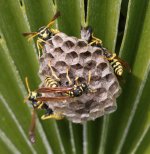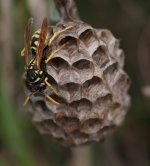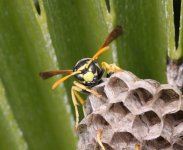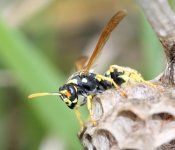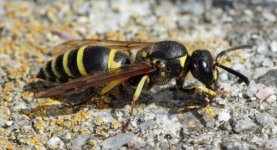Andrew
wibble wibble
Good morning,
These nest building wasps were found in the Albufereta reserve near Port de Pollenca on the northern coast of Mallorca back in April this year.
Unfortunately for me, I am only armed with one page of wasps in my guide. The facial features fit none of them.
So I hope someone here is able to assist me with this one.
Regards,
Andrew.
These nest building wasps were found in the Albufereta reserve near Port de Pollenca on the northern coast of Mallorca back in April this year.
Unfortunately for me, I am only armed with one page of wasps in my guide. The facial features fit none of them.
So I hope someone here is able to assist me with this one.
Regards,
Andrew.




